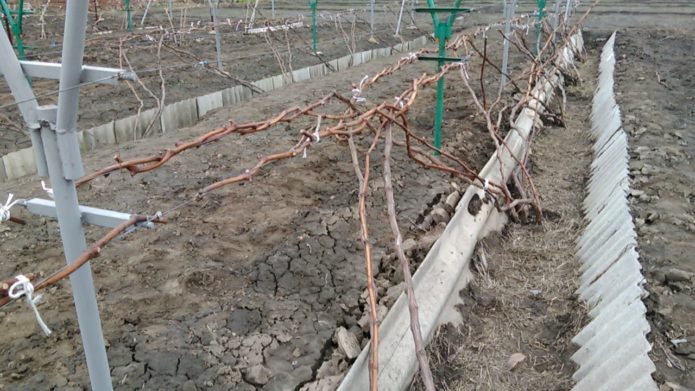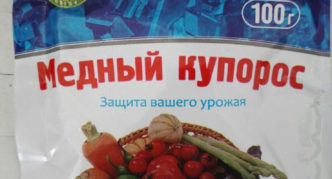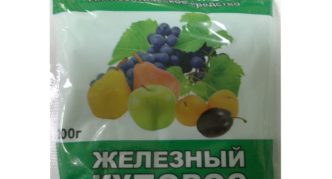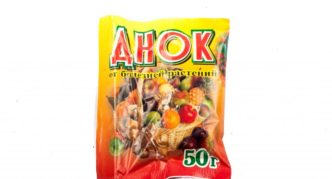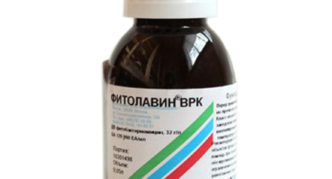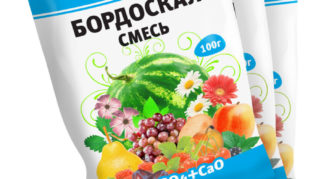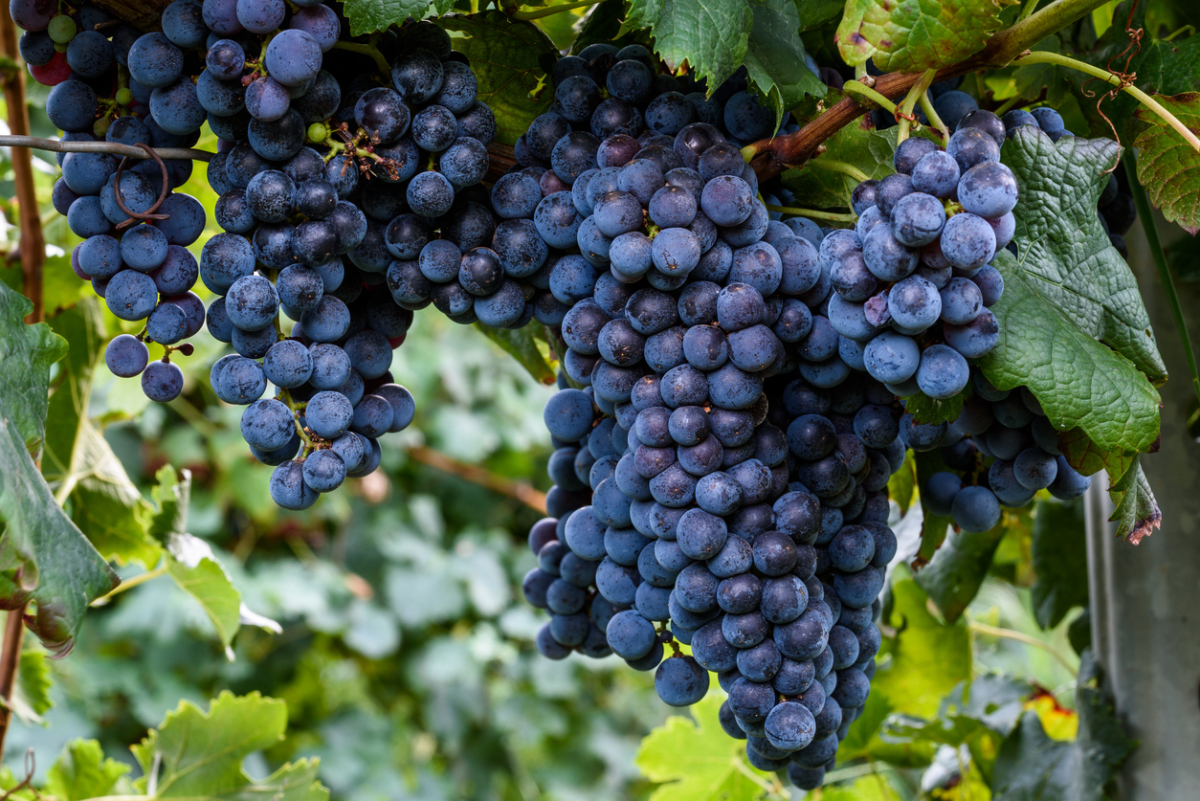Grapes are considered difficult to grow crops. It requires a garter, pruning, feeding, shelter for the winter (in central Russia and northern regions). In all growing regions, this plant can be affected by many diseases, therefore, in early spring, before the buds awaken, they carry out mandatory preventive treatments.
Timing and purpose of processing the vine after winter
In the area of sheltering viticulture, vines are opened first in the spring. Depending on the place of residence of the gardener, this period stretches from early April to mid and late May.... It is very important not to overexpose the vines under cover so that they do not get locked up. Then the vines are inspected, if necessary, they are pruned and only then tied to the trellises.
Old fallen leaves, twigs, and trimmings are removed from the soil surface under the vineyard in order to protect the plant from wintering pests.
And only after all these procedures can you start prophylactic spraying.
The first preventive spraying of grapes in the spring is very important. During wintering, spores of various bacteria and fungi could remain on the shoots, which, in further favorable conditions, can create big problems for the grower, therefore it is better to carry out early spraying against diseases and pests than then to treat diseased grapes.
It is very important to do spraying immediately after opening and tying the vines to the trellises, in no case need to wait for the full opening of the buds. In this case, it is necessary to process not only the vine itself, but also the trellis, as well as the land under the grapes.
How to process grapes in early spring
There are many preparations for the first treatment, among them there are both traditional, time-tested, and new ones.
Table: an overview of the preparations used for the spring processing of grapes
| Name | Act | Mode of application | Human toxicity |
| inkstone | Protects against fungal infections and repeated frost | For spraying, 350 g of ferrous sulfate is diluted in 10 liters of water. The air temperature at the time of spraying should be within + 4-6 ° C | Relatively low toxicity |
| Copper sulfate | Protects against fungal infections | For spraying, 350 g of copper sulfate is diluted in 10 liters of water | The toxicity for warm-blooded animals is relatively low, at the same time, the drug is highly toxic for fish, therefore, after treatment, the solution cannot be poured into water bodies. |
| Topaz | One of the new fungicidal preparations with a wide spectrum of action: it successfully suppresses the development of powdery mildew, fruit rot and rust, and 3 days after spraying it begins to strengthen the defenses of the grapes | To prepare the working solution, use 4 ml (2 ampoules) per bucket of water | This drug is toxic to humans, therefore protective clothing must be worn when working. It is a substance of average toxicity, belongs to the third class of hazard for humans and animals |
| DNOC | Very strong acaricide and fungicide in one powder | Not recommended for use in personal subsidiary plots | Recommended for use only in industrial vineyards... The minimum distance from the treated plants to living quarters should be 1 km, while the drug can be used once every 3 years. Before treating garden plants with DNOC, it is necessary to cover the soil with a film so that the drug does not get into the ground and destroy beneficial microorganisms. For humans, a lethal dose is considered to be from 2 to 5 g, the drug irritates the mucous membranes of the respiratory system, it is difficult to wash off the skin. Dried DNOC is explosive |
| Pharmayod | Antiseptic and disinfectant biological product with a wide spectrum of action against viruses, fungi, microorganisms | For spraying on dormant buds at the beginning of spring, they dilute a tablespoon of Phytolavin and Farmayoda in a bucket of water and process trellises, vines and soil under the grapes | When used in recommended doses, no phytotoxic effect is detected |
| Fitolavin | Systemic preparation of natural origin, approved for use in summer cottages; effective against root rot, fire blight, fungal infection | Filolavin belongs to the third class of toxicity for the human body, that is, it has a moderate hazard | |
| Bordeaux liquid | It is used to fight fungal diseases (for example, mildew) | For 10 liters of solution, take 300 g of copper sulfate and 300 g of quicklime | The liquid is harmful in contact with the eyes. It is necessary to spray with glasses and gloves |
Photo gallery: preparations for processing grapes in spring
- For spraying with copper sulfate, 300 g of the drug are diluted in a bucket of water
- Iron sulfate is very often used as a spray solution
- Topaz suppresses fungal spores well
- DNOC is a very toxic drug, it is not used near a home
- Pharmaiod fights fungal and bacterial infections
- Fitolavin is best used in a mixture with Pharmayod for the prevention of viral and fungal diseases
- Bordeaux mixture - a long-known and excellent plant protection drug
Video: scorching spraying of a vineyard in spring with iron sulfate
Features of processing grapes in different regions of Russia
Although initially grapes are a thermophilic culture, thanks to the efforts of breeders, they are grown in many regions of our country.
In the Kuban
Kuban is a wonderful place for growing grapes: mild winters, long summers, lots of sun. However, there are many diseases and pests that are not found in more northern regions. Most often vineyards in the Kuban suffer from mildew, oidium, anthracnose... Therefore, for the prevention of these diseases, spraying begins in April. The best, in addition to the above drugs, are contact fungicides:
- Bordeaux liquid (copper sulfate plus lime),
- Zolon,
- Kemyfos,
- Fastak.
In outskirts of Moscow
The vines, freed from winter shelter and tied to a trellis, are treated with a solution of ferrous sulfate, which heals cracks in the wood and increases the resistance of the vines to recurrent frosts... For the prevention of oidium and anthracnose, grapes are sprayed with Bordeaux liquid, and Topaz is used for fruit rot.
In Siberia
Since the vineyards in Siberia are quite young, they are practically unfamiliar with such sores as in the Kuban (mildew and oidium)... However, for prophylaxis, the vines are also treated with fungicides or antifungal and antiviral biological products (for example, Fitolavin).
Video: processing grapes in spring after opening the bushes
It is better to prevent the disease than to cure, therefore, immediately after wintering, the vines are treated with antifungal and antibacterial drugs. The easiest way is to use proven means: copper and iron sulfate. However, biological products do an excellent job with this task. The main thing is not to waste time and spray before bud break.
